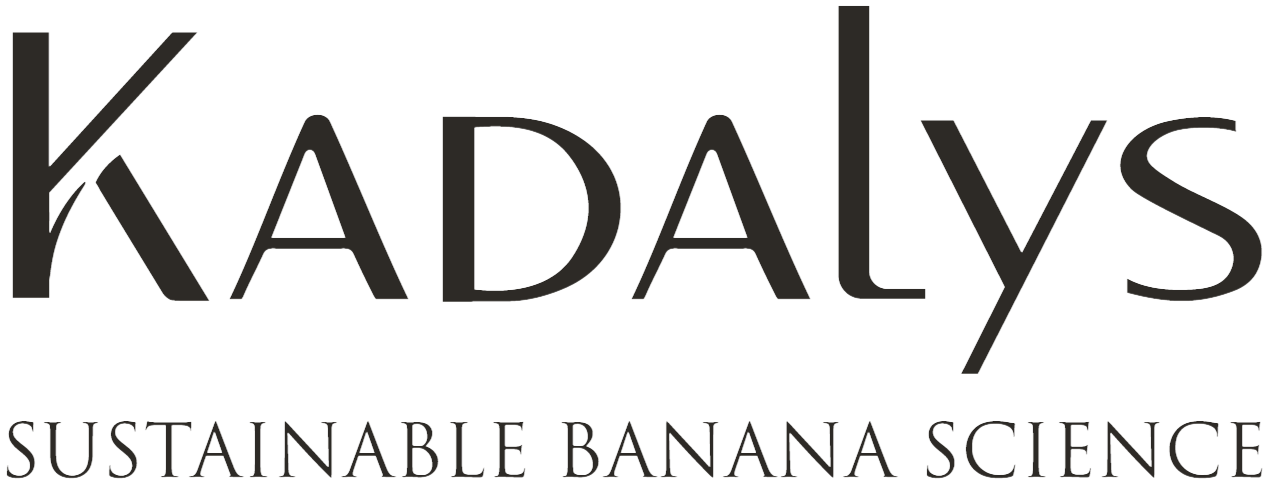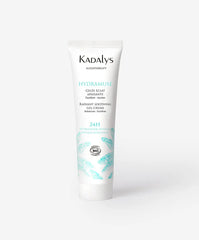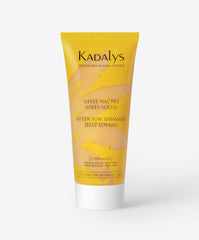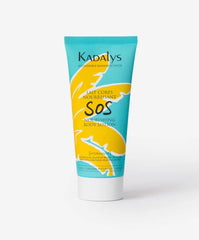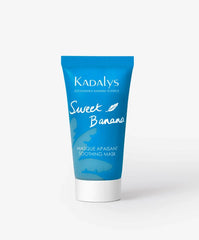
MOISTURIZING OR NOURISHING YOUR SKIN: WHAT IS THE DIFFERENCE AND HOW TO CHOOSE THE MOST SUITABLE TREATMENT?
Should you hydrate or nourish your skin? This is one of the most frequently asked questions about hydration. However, there is still some confusion around these two very distinct but often used interchangeably terms. Indeed, moisturizing and nourishing care have two different functions and are intended to be used on different skin types!
First of all, why moisturize your skin?
Beyond the aesthetic benefits of comfort or a healthy glow, hydration is the basis of good skin health. Good hydration contributes to its proper functioning:
Well hydrated skin will be better protected against external aggressions (environment, pollution, air conditioning, injuries)
Hydration allows better absorption of treatments and their active ingredients
Stimulation of cell renewal is promoted because hydration helps remove dead skin from the stratum corneum How does hydration work?

Applying heavy moisturizers on a daily basis alone is not enough to maintain a good level of hydration in the skin. Several habits should be taken into account:
Drink at least 1.5 to 2 liters of water per day: we can never repeat it enough but this is the basis!
Respect the hydrolipidic film of the skin which acts as a natural barrier against skin dryness because this film composed of aqueous and lipid elements retains the water present in the skin. So no more cleaners containing aggressive surfactants and sulphates that can alter this barrier function.
Exfoliate regularly with the weekly use of a gentle exfoliant with enzymatic action (choose AHAs or hypoallergenic fruit acids) and / or mechanical (choose the finest micro-beads possible). Ridding the stratum corneum of its dead cells contributes to better absorption of moisturizers and their active ingredients.
Choose moisturizers rich in so-called humectants such as hyaluronic acid or glycerin. These help to capture and preserve water molecules. For example, hyaluronic acid, a substance naturally produced by the body, can retain up to 1,000 times its weight in water.

A so-called "moisturizer" will mainly consist of elements that help provide water to the skin, but it also contains a smaller proportion of lipids to help the skin retain this water. One does not go without the other. A moisturizer, such as our Soothing Radiance Jelly, is particularly suitable for dehydrated skin. Note that dehydrated skin corresponds to a skin condition, not to be confused with dry skin which is a type of skin.
Indeed, dry skin is characterized by a lack of lipids contained in the hydrolipidic barrier. Thus, the water will have a greater tendency to evaporate easily, hence the lack of hydration, flexibility, daily tightness and the "crocodile skin" appearance observed. Vulnerable, it is more prone to skin aging.
Conversely, any type of skin (dry, normal and even oily) can also suffer from dehydration. It is the skin that feels tight, but occasionally. Some examples of the factors involved: alcohol, tobacco, external aggressions such as air conditioning, wind, a significant level of pollution, following aggressive skin treatment (anti-acne products) ... But dehydration is a skin condition: once the balance is restored, it regains its suppleness and a normal level of hydration.
What about skin nutrition and nourishing care?

Moisturizing your skin by providing it with the water it needs to maintain its suppleness using the previously mentioned moisturizing agents is one thing. The second step will be to nourish the skin in order to maintain an optimal level of hydration throughout the day and to maintain skin comfort. This is the function of nourishing creams rich in lipids (more than in moisturizers) and so-called "emollient" agents such as oils and vegetable butters. The intake of fatty substances helps seal the water molecules that the skin has absorbed over time. A good nourishing treatment is also the key to getting a foundation and making it last all day.

Nourishing treatments, such as our Comforting Cream, will be particularly suitable for dry and mature skin whose hydrolipidic barrier is weakened because it is low in lipids. Like moisturizers, nourishing creams, to be truly effective on dry skin, must include both an oily part but also an aqueous part because, contrary to what one might think, the skin has difficulty absorbing the moisture. water directly. The same is true for oil. This is when the two are mixed together evenly that we obtain an emulsion easily absorbable by capillary action. To boost the absorption of a facial oil, it is therefore recommended to mix it with your usual day or night cream. However, this is not necessarily necessary for normal to oily skin whose skin barrier functions work better and which does not experience any real discomfort.
You know all about the difference between nutrition and skin hydration now, so it's up to you!
